Incredibly sweet and amazingly beautiful tomato “Honey Salute”
Gardeners love to experiment by growing tomatoes in unusual colors and shapes. At gardening markets, green, black and blue tomato seeds are abundantly available. Unfortunately, not all exotic varieties have a pleasant taste and produce crops in our latitudes. Therefore, every cultivation of a new tomato variety is a risk.
Among the proven varieties with interesting fruits is the Honey Salute tomato. It produces colorful yellow-red berries with a distinct taste and rich composition.
Description of the variety
The tomato variety Honey Salute was developed in 1999. It was added to the Russian State Register only in 2004.
This variety is produced by many manufacturers. It is popular with gardeners around the world. It is especially often grown in Russia and the countries of the former CIS.
Distinctive features of the Honey Fireworks
Honey Salute tomatoes are distinguished by the unusual appearance of the fruit. The berries of this variety at the ripe stage are bright yellow, with red streaks and spots.
The tomato taste is also impressive. It is sweet, with a honey aftertaste and mild sourness. The pulp of such fruits is dense and juicy.
The variety is considered large-fruited. The weight of its fruit varies between 350-450 g, but there are specimens weighing up to 900 g.
Honey Salute tomatoes are consumed fresh. They are not suitable for preservation whole or in slices, not only because of their size, but also because of their thin skin. Some gardeners use this variety to make juices and sauces.
When fresh, fruits retain the greatest amount of nutrients. Yellow-red berries contain a lot of beta-carotene, which has a beneficial effect on vision, improves the condition of the skin, hair, blood vessels and heart, and improves immunity.
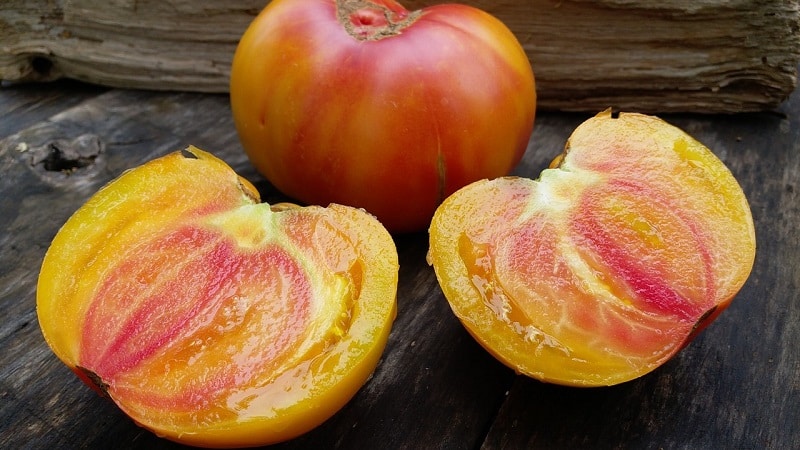
The variety itself is susceptible to fungal diseases, but resistant to viral ones.
The downside of the Honey Salute is its high maintenance requirements. It forms a large number of stepsons, so it needs regular formation. The heat-loving nature of this tomato does not allow it to be grown in open ground conditions in most regions of our country.
General characteristics
The characteristics of the Honey Salute tomato will interest experienced gardeners. Beginning gardeners should start with less capricious varieties.
Description of the Honey Fireworks:
| Parameter | Indicators |
| Bush type | Indeterminate variety (grows throughout the growing season). In a greenhouse it grows up to 1.8 m, in open ground up to 1.5 m. The bushes have powerful and thick stems. The plant forms many stepsons and branches heavily. The bushes have an average number of leaves. The leaves are bright green, simple and without pubescence. Inflorescences are intermediate. The first inflorescence is ordered in the axil of 10-12 leaves. The rest every 2-3 sheets. The fruits are formed in clusters. |
| Growing method | Heat-loving variety. Outdoor cultivation is possible only in the southern regions. In other regions, greenhouse planting and film shelters are practiced. |
| Productivity | Average. From 1 sq. m of tomato plantings harvest up to 7 kg. fruits |
| Fruit | Large ones. On average, the berries reach a weight of 350-450 g. The largest specimens reach 900 g. The color of the berries is yellow, with pink and red spots and stripes. The inside of the fruit is dark yellow with pink spots.There are no green or white spots at the base. The shape of tomatoes is round, flattened at the top and bottom. There is a faint ribbing at the base. The berries taste sweet, with a honey aftertaste. The pulp is dense but juicy. Inside each tomato there are 6 seed chambers with a small number of seeds. |
| Transportability | Low. The fruits have thin skin that is easily damaged during transportation. Honey salute can be stored in the refrigerator for no more than a month. |
| Ripening time | Late ripening variety. The first harvest ripens 4 months after sowing the seeds. Fruiting continues until the end of September. |
| Disease resistance | Immunity is low. |
Growing seedlings
Seeds for seedlings are sown in early March in all regions. This is due to the fact that the Honey Salute tomato in the central and northern part of the country is planted only in a greenhouse. Picking in protected ground is possible much earlier than in open ground
Working with planting material
Before starting to grow seedlings, prepare planting material. This reduces the likelihood of plant infection and speeds up seed germination.
Before purchasing seeds, be sure to check their expiration dates. Expired planting material will have a low chance of germination.
To select the most viable seeds, they are soaked in saline solution for half an hour. To prepare the product, stir 1 tsp in a glass of water. salt. Specimens that float up are thrown away, and those that sink to the bottom are washed and used for planting.
Due to the instability of Honey Salute to tomato diseases, its seeds must be treated with a disinfectant composition.Some manufacturers sell already treated planting material, as evidenced by the inscription on the package and the orange or green color of the seeds. In other cases, the seeds are disinfected independently.
To do this, they are soaked:
- in a light pink solution of potassium permanganate for half an hour;
- in a solution of soda for 12 hours;
- in aloe juice diluted in half with water for 12 hours.
After dressing, the seeds are treated with a growth stimulator. I often use Epin, in which the seeds are soaked for 3-5 hours.
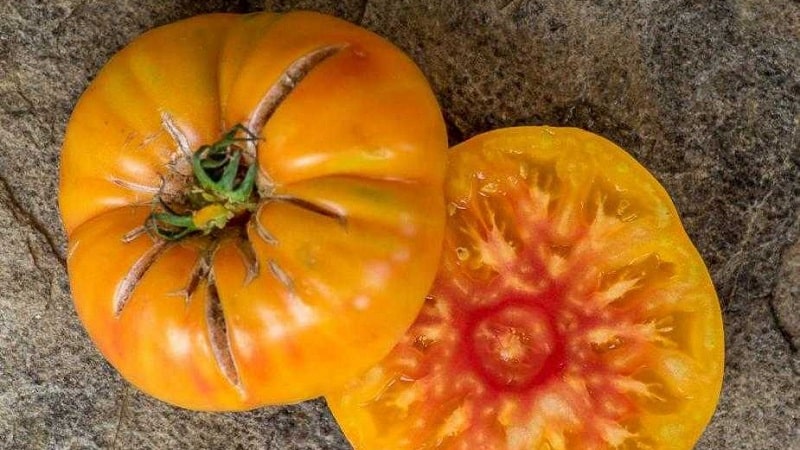
Selection of soil and containers
Usually the seeds are sown in one common container. Stores sell special wooden boxes and plastic trays.
The following materials are also used for these purposes:
- disposable tableware;
- trays for semi-finished products;
- trimmed 5-6 liter bottles.
To pick plants into individual pots, use containers with a volume of 300-500 ml. For these purposes, special pots, cut-off bottles or disposable cups are used.
The containers are disinfected before use. To do this, they are soaked in a strong solution of potassium permanganate.
You can prepare soil for tomatoes yourself or buy it in a store. The soil for tomatoes should be light and nutritious. To prepare the soil, turf, peat and humus are mixed in different proportions. Spit substrate or river sand is added to the resulting composition.
The soil is disinfected. To do this, water it with a solution of potassium permanganate or boiling water. Another option is to calcine the soil in the oven.

Sowing seeds
Soil is poured into the container so that there is a distance of 2 cm to the edge. Grooves are made in the soil, 1 cm deep. The distance between them should be 3 cm.
Seeds are placed in the grooves at a distance of 1.5 cm from each other. They are sprinkled with earth on top without compacting it.
Boxes with seeds are moistened with warm, settled water. After this, they are covered with film and placed in a warm place. Depending on the room temperature, seed germination times vary from 3 to 7 days.
It is convenient to grow seedlings in peat tablets. To do this, such blanks are soaked until they swell, after which seeds are placed in the holes. Next, all the tablets are placed in one container and covered with film.
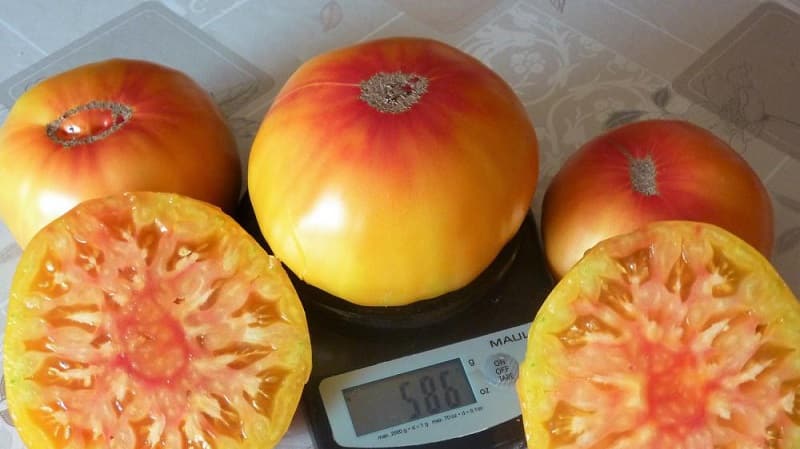
Seedling care
Care seedlings must be regular. Only in this case will it be possible to grow healthy and viable plants. Below are the main nuances that a gardener who grows his own tomato seedlings needs to know about:
- Seeds do not need sunlight before germination. Therefore, they are placed in a dark, warm place. Sometimes gardeners cover the boxes with dark film to speed up germination.
- When the first shoots appear, containers with seedlings are placed in a well-lit place. If there was a dark film on them, it is removed. If the boxes are covered with transparent glass, then leave it in the first week after germination.
- Before the seeds germinate, the soil is moistened with a spray bottle. After the first shoots appear, water the plants with a syringe. Use water at room temperature.
- When the first true leaves appear on the plants, they are picked into individual containers. The root is not pinched. This slows down plant growth.
- After picking, the tomatoes are watered from a watering can. It is important that water does not fall on the ground part.
- During the entire period of growing seedlings, plants are fed 3 times. The first time fertilizer is applied 2 weeks after picking, the second time after 2-3 weeks, the 3rd time 3 days before planting in the greenhouse.
- 14 days before picking tomatoes to a permanent place, they begin to harden. To do this, they are taken out to the balcony, gradually increasing the time spent in the fresh air.
Agricultural technology of the Honey Salute
Honey salute is planted in a permanent place in May. The method of its cultivation depends on the region:
- southern – in open ground;
- central – in film shelters;
- northern – in a glass-enclosed greenhouse.
3 days before planting tomatoes in a permanent place, they are watered and fed. Phosphorus and potassium fertilizers are used.
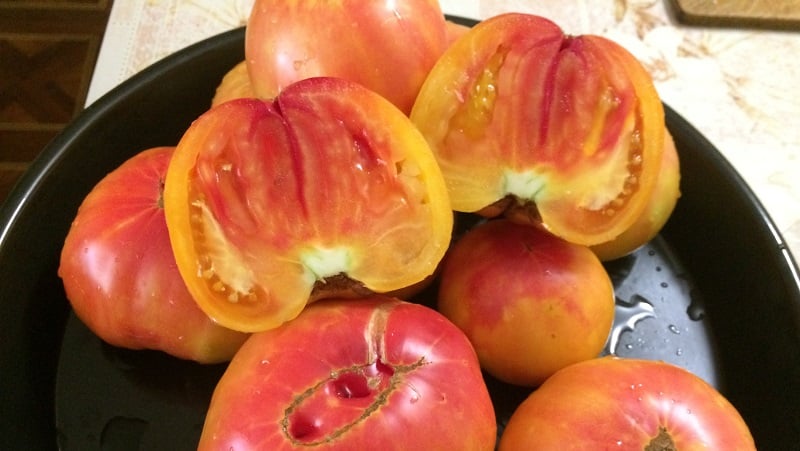
Planting seedlings in a permanent place
The beds for planting tomatoes are prepared in advance. They are cleared of plant remains and dug up. To enrich the soil, fertilizers are added to it: mullein, humus, etc. If there is a need to reduce the acidity of the soil, then it is mixed with dry lime.
In the spring, the soil is dug up again. It is watered with a solution of copper sulfate. Dig holes that are arranged in rows in a checkerboard pattern. Use a 40 x 70 cm scheme. For 1 sq. m place 4 plants.
The tomatoes are removed from the pots and placed in the holes. 1 liter of water is poured into each recess. The holes are filled with soil.
Caring for Honey Fireworks
Honey salute is a tall plant with large fruits. Therefore it needs to be tied up. The bushes are attached to a support as they grow. Additionally, the clusters with fruits are tied up.
Form a tomato into 1-3 stems. The more stems left, the smaller the fruits will be and the later they will ripen. When forming a tomato into 2 stems, the best yield indicators are observed.
The growth of the Honey Fireworks is artificially limited. To do this, pinch the top of the main stem after 4 brushes.The growth point of additional stems is limited after the appearance of the 3rd cluster.
When pinching tomatoes, not only are they removed stepsons, but also all leaves up to the first ovary. This will speed up fruit set and ripening. Stepping is carried out no more than once a week. No more than 3 leaves are removed at a time.
Watering tomatoes should be regular and plentiful. Each adult plant consumes at least 2 liters of water. Use warm, settled water. After planting the plants in a permanent place, the soil is moistened for the first time after 10 days.
Tomato bushes are shaken regularly. This promotes their pollination.
Tomatoes are fed 3-4 times per season. The first fertilizing should include nitrogen. The second time mineral fertilizers are used. Then the tomatoes are watered with organic compounds. After the first fruits appear, formulations with potassium and phosphorus are used.
Twice a season the bushes are sprayed with foliar fertilizing. Such fertilizers must contain boron.
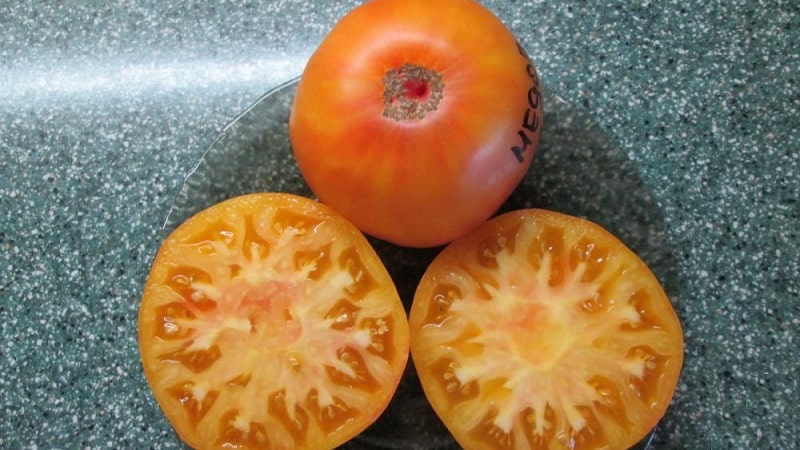
Common gardening mistakes
The Honey Salute variety is quite difficult to care for. Beginning gardeners often make mistakes that increase the risk of disease and plant death:
- Refusal mulching. Mulch retains moisture in the soil, slows down the growth of weeds, prevents roots from freezing, and becomes an additional fertilizer for tomatoes.
- Spraying tomato bushes with water. Tomatoes do not like liquid getting on their greens. This mistake often leads to withering and death of plants. Drops of liquid on the bushes attract pests.
- Applying large amounts of fertilizer. In this case, the tomatoes will be covered with a lot of greenery, but the fruits will be small and sparse.
- Thickening of plantings. Tomatoes planted too close create additional shade, which leads to a decrease in tomato yield.
- Preservation of all inflorescences. All incorrectly formed inflorescences must be removed. This will help healthy fruits to form faster, gain maximum weight and ripen.
- Wrong neighborhood. In open ground, tomatoes should not be planted next to other nightshades. This will increase their risk of infection. In a greenhouse, tomatoes should not be adjacent to any other crops.

Diseases and pests
Honey salute has weak immunity to tomato diseases. Therefore, its cultivation requires not only compliance with the rules of prevention, but also the use of additional means for processing the bushes.
Rules for the prevention of tomato diseases:
- Disinfection. Disinfecting compounds are used to treat soil, seeds, containers and garden tools.
- Cleaning up last year's plants. Remains of plants in the beds must be removed and burned. They can be carriers of infection.
- Correct watering. Dry and waterlogged soil is an ideal environment for the development of infections.
- Protection from insects. The above-ground part of tomato bushes is treated with herbal decoctions, soap solution and compositions with colloidal sulfur. Egg shells are poured under the root. Large beetles are collected by hand.
- Preventive treatment of bushes. To prevent the development of fungal diseases, tomatoes are treated 3 times a month with solutions containing copper or Bordeaux mixture.
Cultivation in closed and open ground
Honey salute is grown mainly indoors. Under such conditions, the yield of the variety increases and the likelihood of infection decreases.
Before planting tomatoes in a greenhouse, you need to treat the walls of the room with copper sulfate or a solution of potassium permanganate. It is advisable to carry out preventive treatments during the growing period of plants.
The windows in the greenhouse are opened daily for ventilation. On cloudy days the room is left closed.
Planting Honey Fireworks in open ground is possible only in the southern regions. Even in warm climates, the yield of tomatoes grown outside of a greenhouse will be reduced, and the risk of infection will increase significantly.
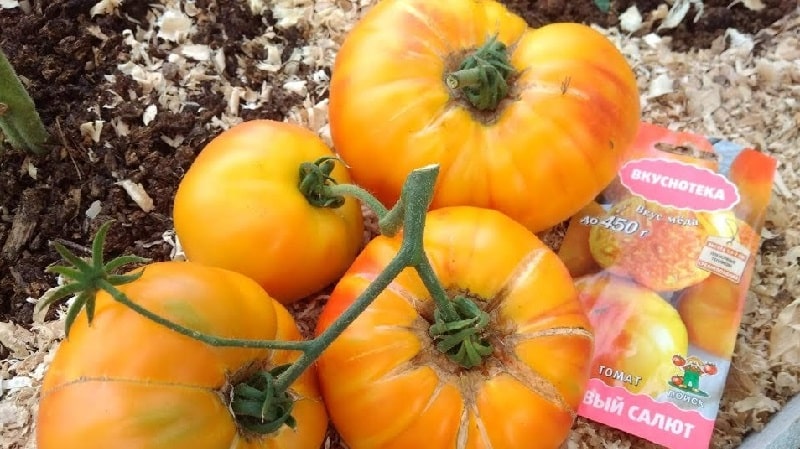
Harvesting and application
Honey Salute tomatoes are harvested in the second half of August. The ripeness of the fruit will be indicated by a dark yellow color and red stains.
When harvesting tomatoes, it is important to preserve the stem. In this case, they will be stored longer. After harvesting, the tomatoes are placed in the refrigerator. There they will stay fresh for no more than a month and a half.
The fruits are used for salads and cooking. For conservation this variety is not suitable.
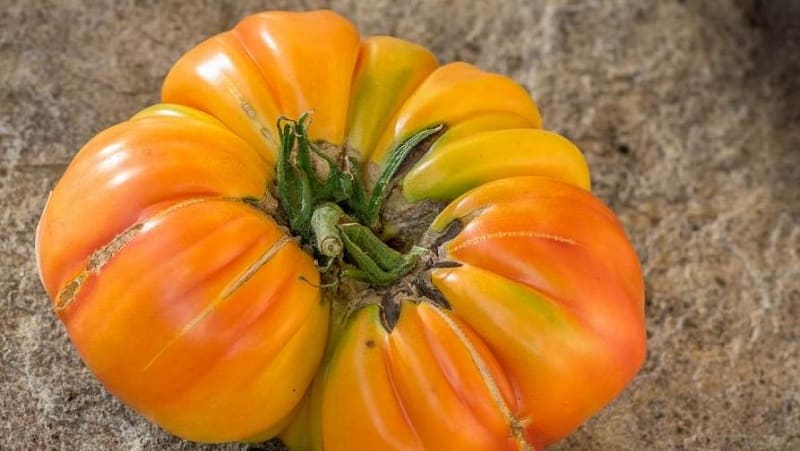
Advantages and disadvantages
Advantages of Honey Fireworks:
- a large amount of beta-carotene in the composition;
- rich sweet taste;
- beautiful colour;
- large-fruited.
Flaws:
- not suitable for conservation;
- needs frequent grazing;
- demanding care;
- grows poorly in open ground;
- has low immunity to plant diseases.
Farmer reviews
Reviews from gardeners about Honey Salute are mostly positive. Everyone notes the excellent taste of its fruits.
Alena Sachuk, Klin: “I grew Honey Salute in a greenhouse. Formed into 1 stem. Excess inflorescences were removed. I regularly treated it with Bordeaux mixture, so the tomatoes did not get sick. At the end of August I collected large fruits, weighing from 400 to 600 g. The taste was very impressive.The berries are sweet, juicy and very fleshy. I’m thinking of planting it again, although there’s a lot of fuss with it.”
Andrey Grigorenko, Belgorod: “I’ve been growing Honey Salute in a greenhouse for two years. The variety is capricious to care for. It is constantly necessary to treat it with various means against diseases and pests and feed it. Clusters with fruits need to be tied up additionally. I grow it for my grandchildren because of the delicious sweet fruits without sourness. Some tomatoes are cracking even though I don’t water them often.”

Conclusion
Tomato Honey Salute is a variety with bright yellow-red fruits. In addition to their beautiful color, these tomatoes have an amazing sweet taste and a composition rich in vitamins.
This variety is not suitable for novice gardeners. It has low immunity to disease and is demanding in care. Its cultivation is possible only if there is a greenhouse. However, everyone who tried to plant this variety once will return to it again. After all, all the hard work pays off with great taste.